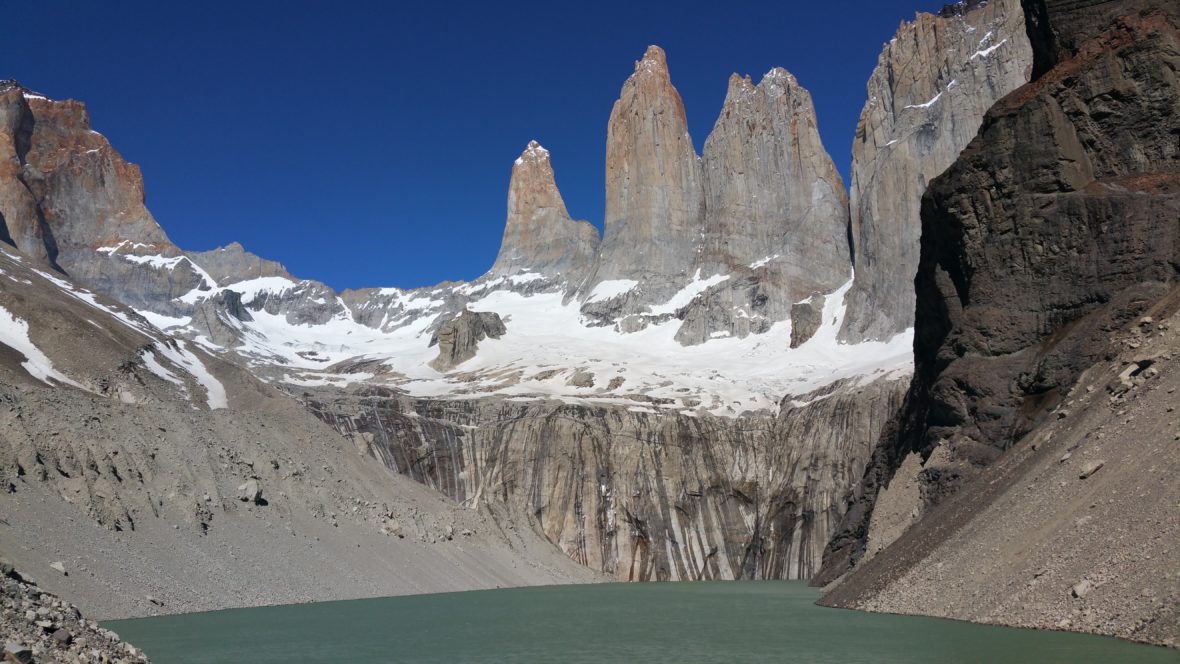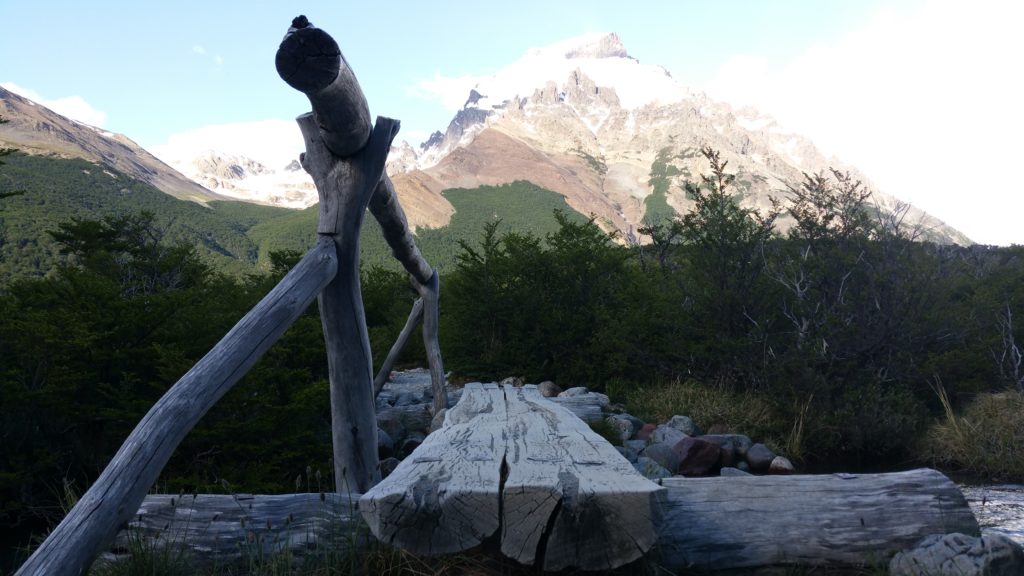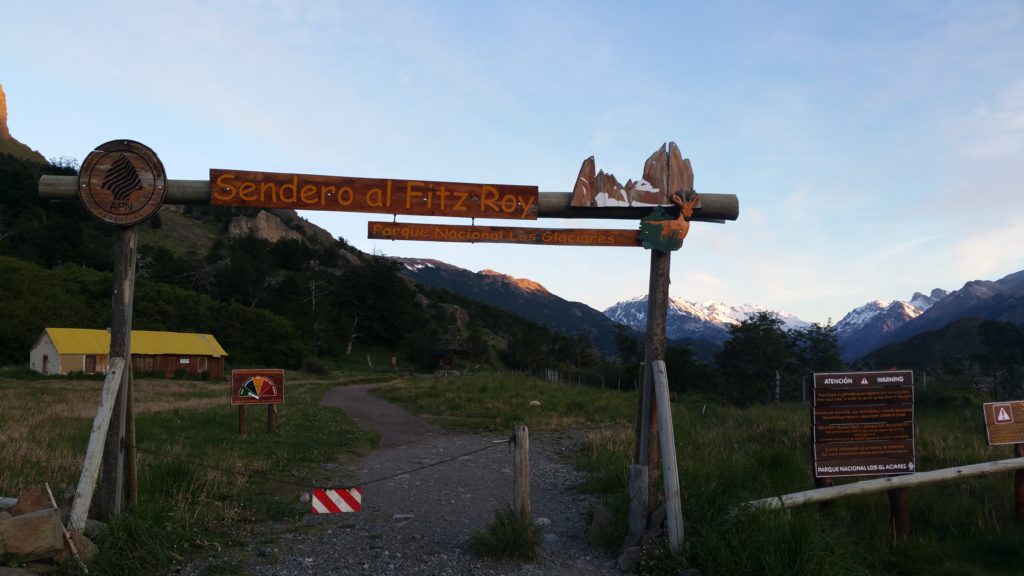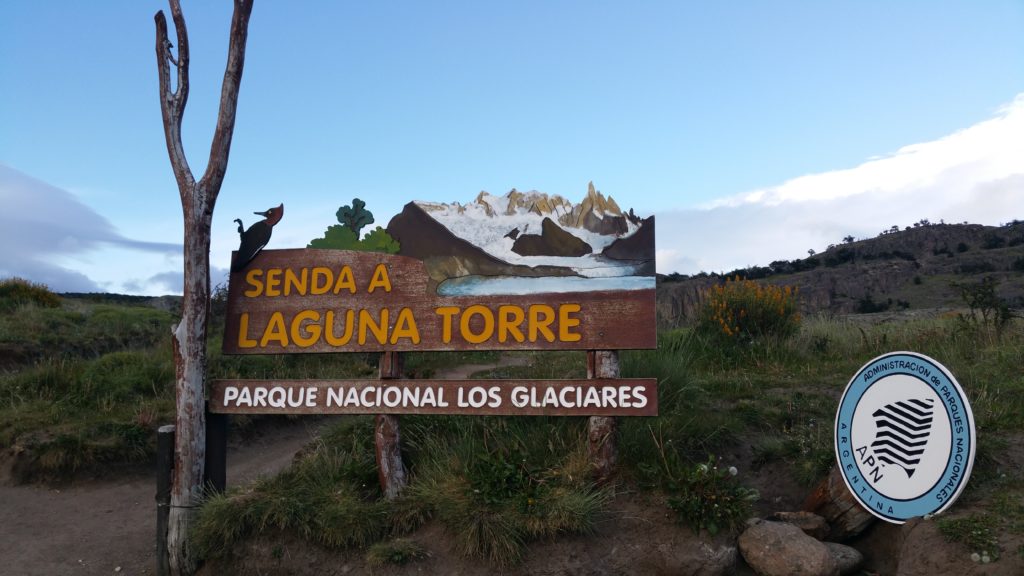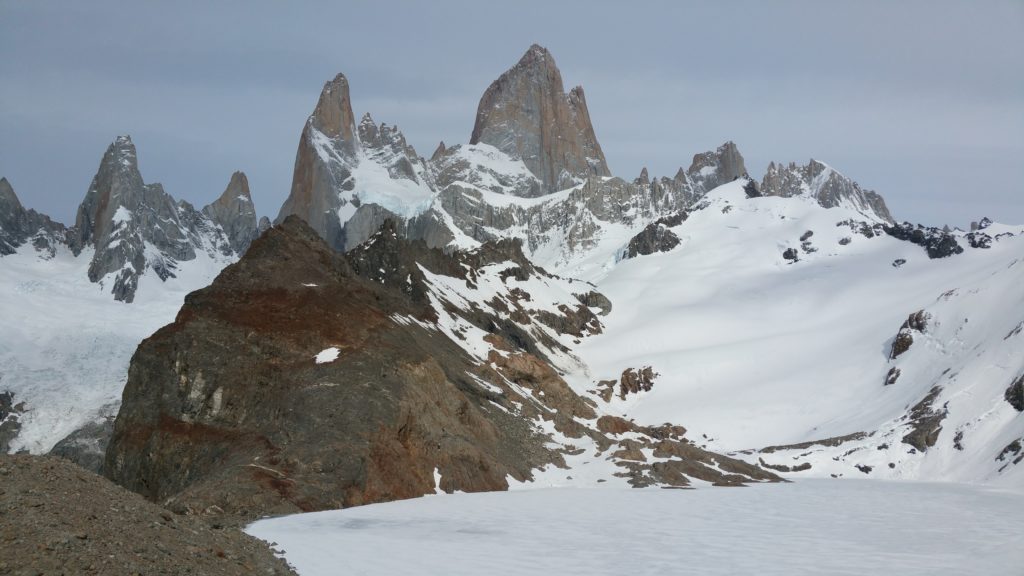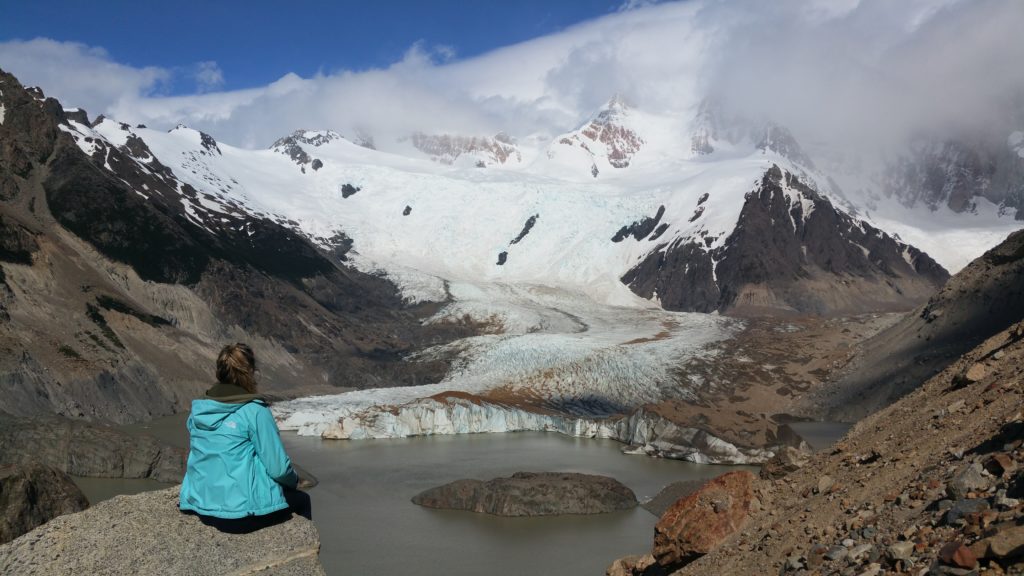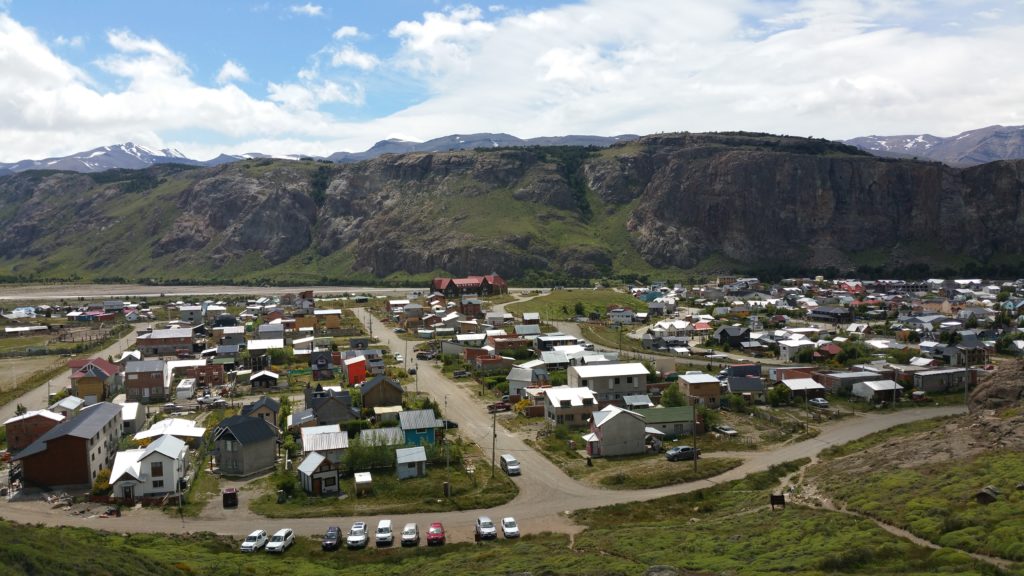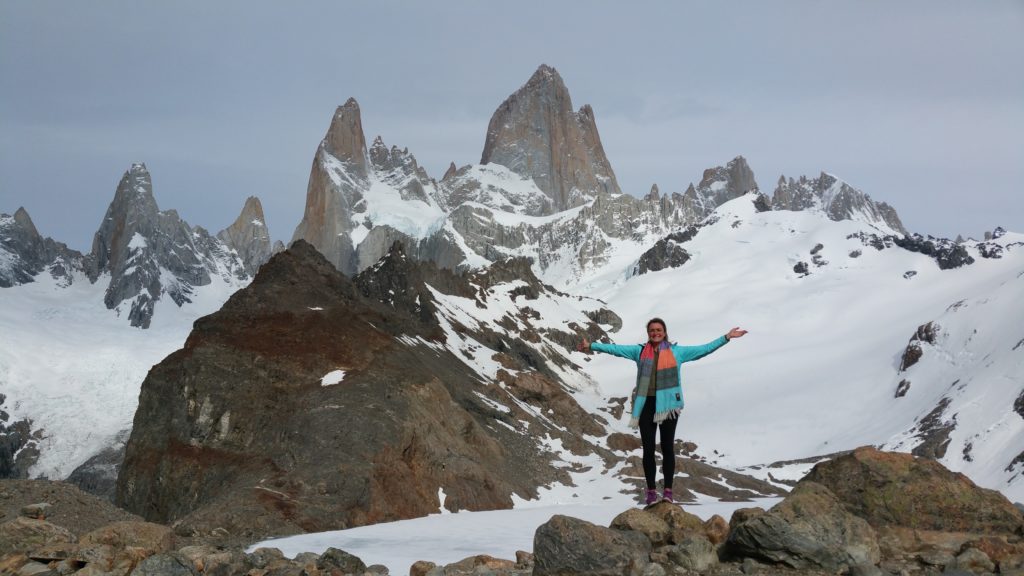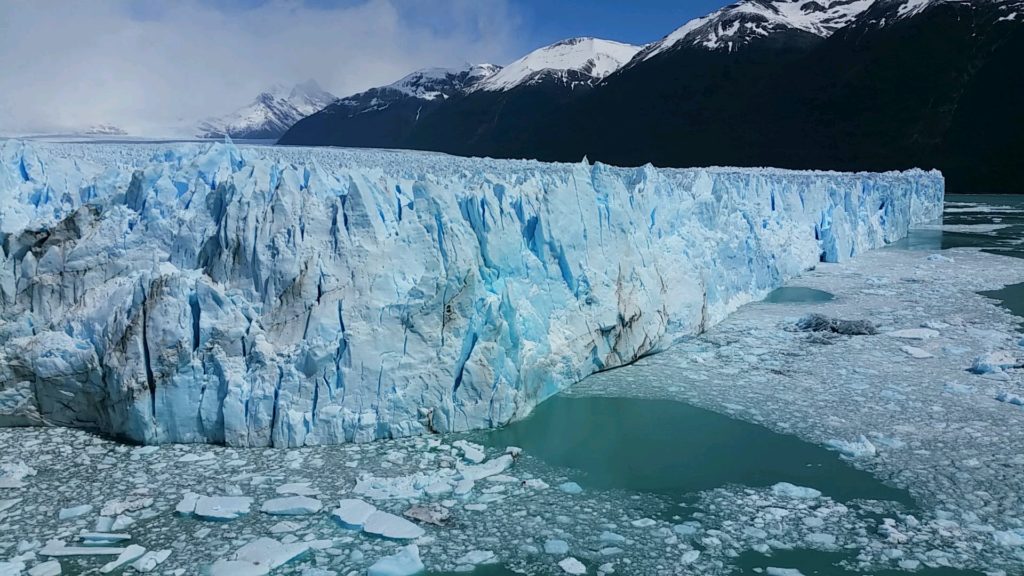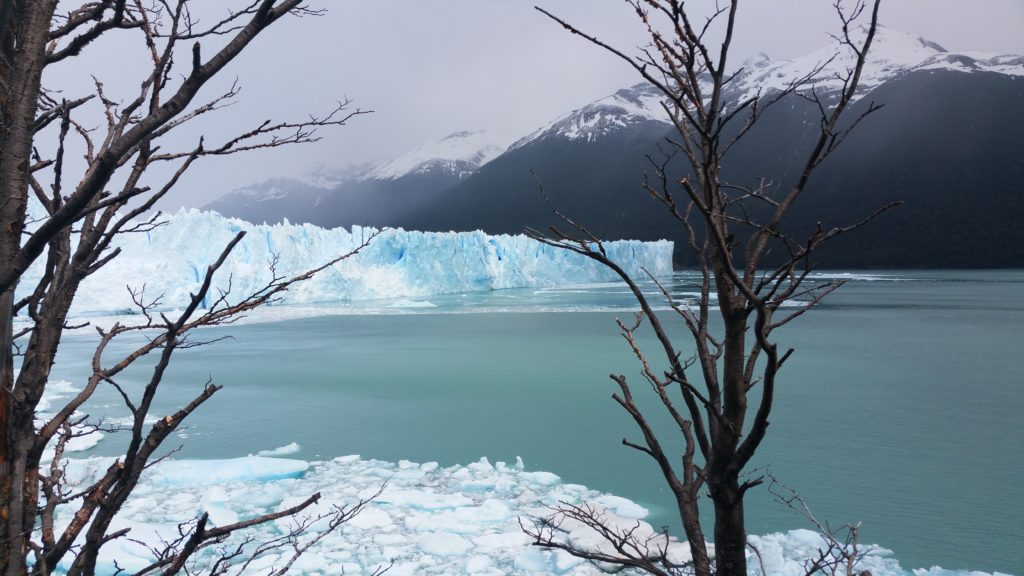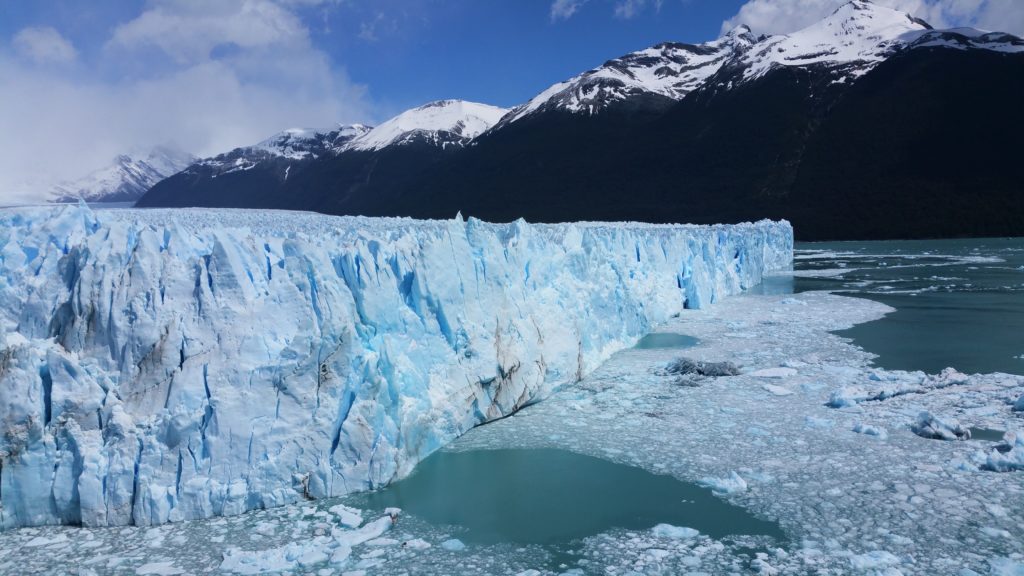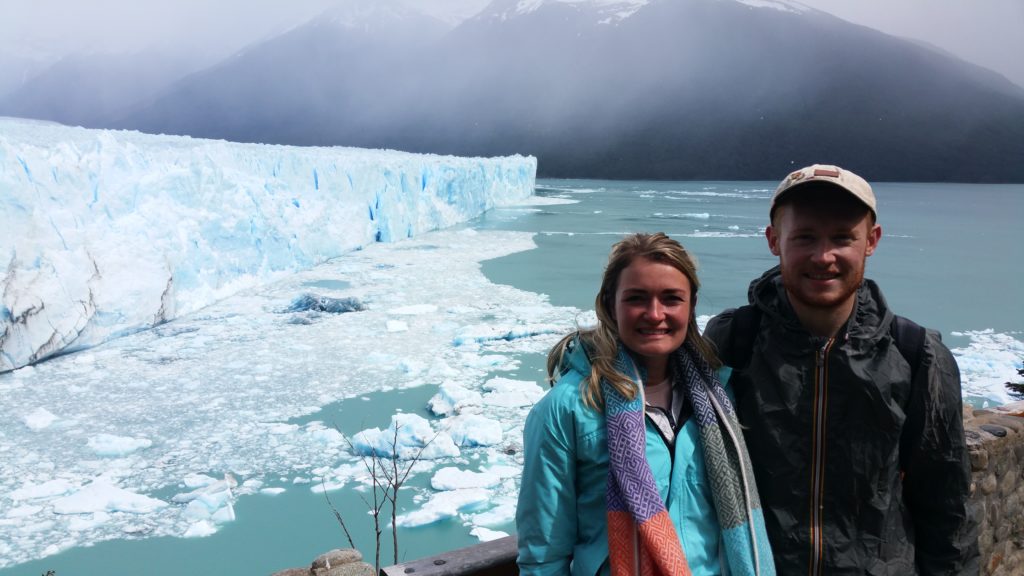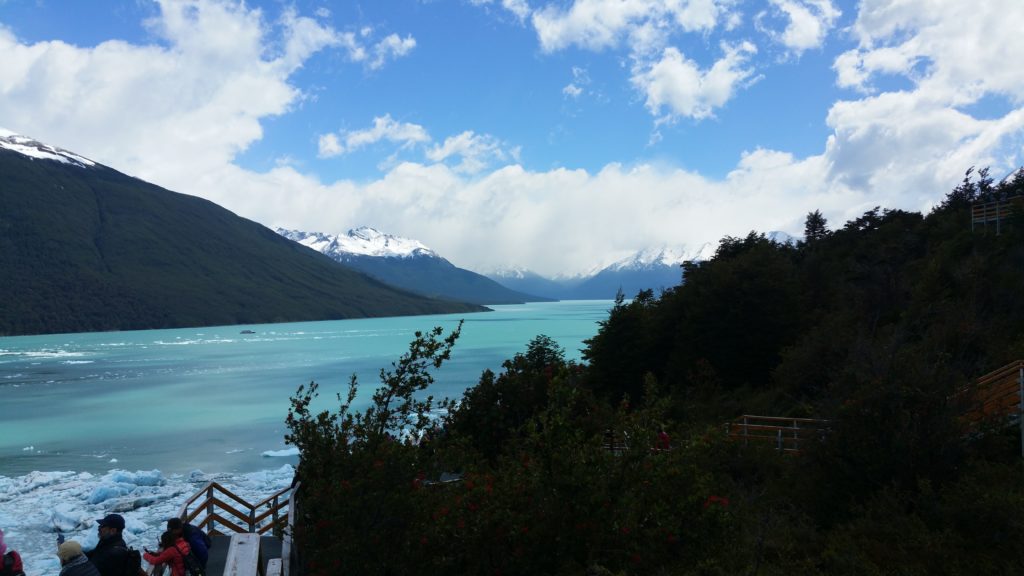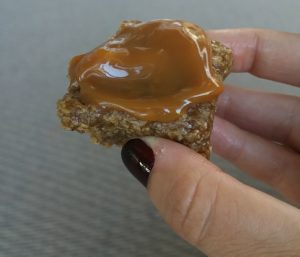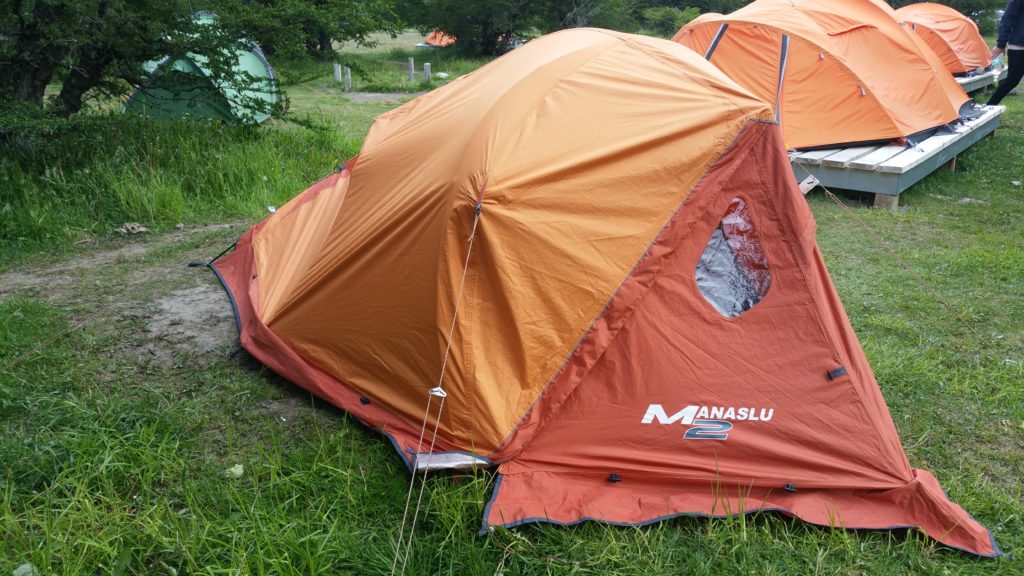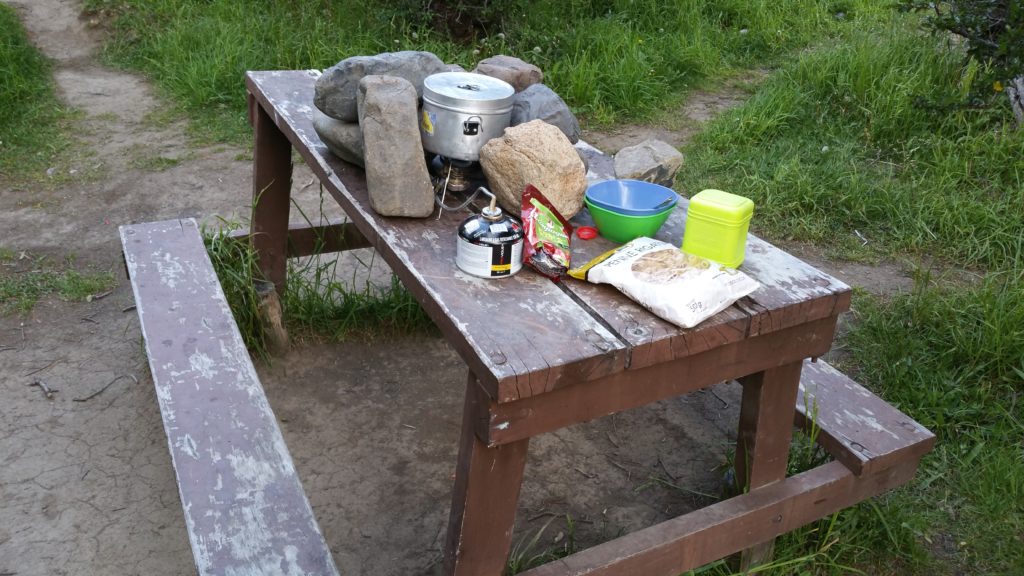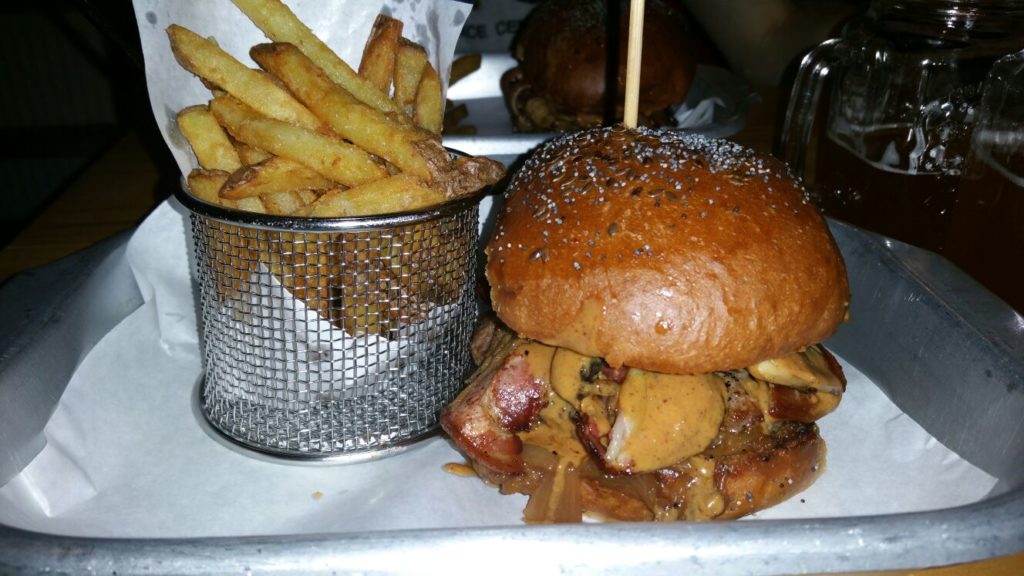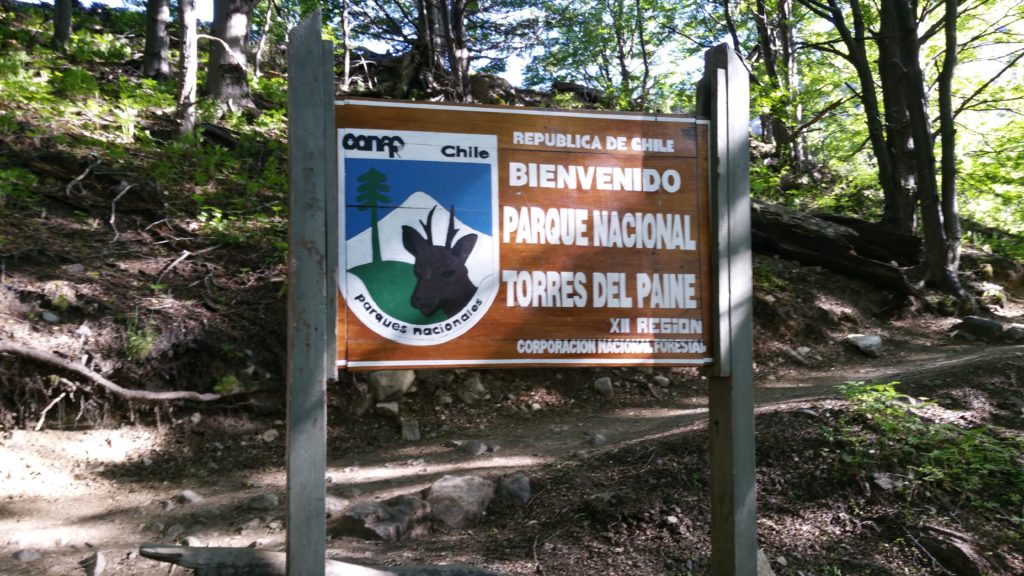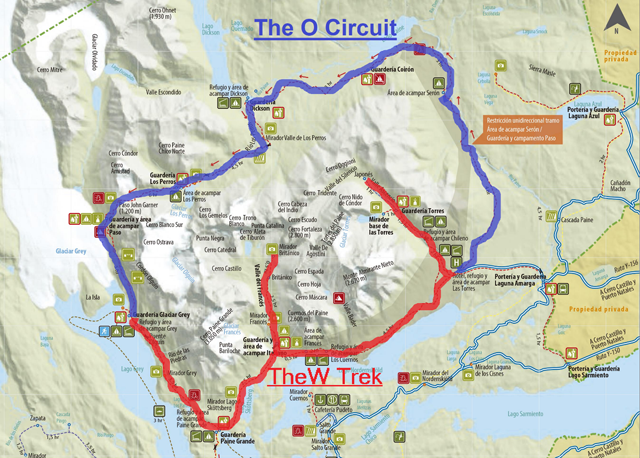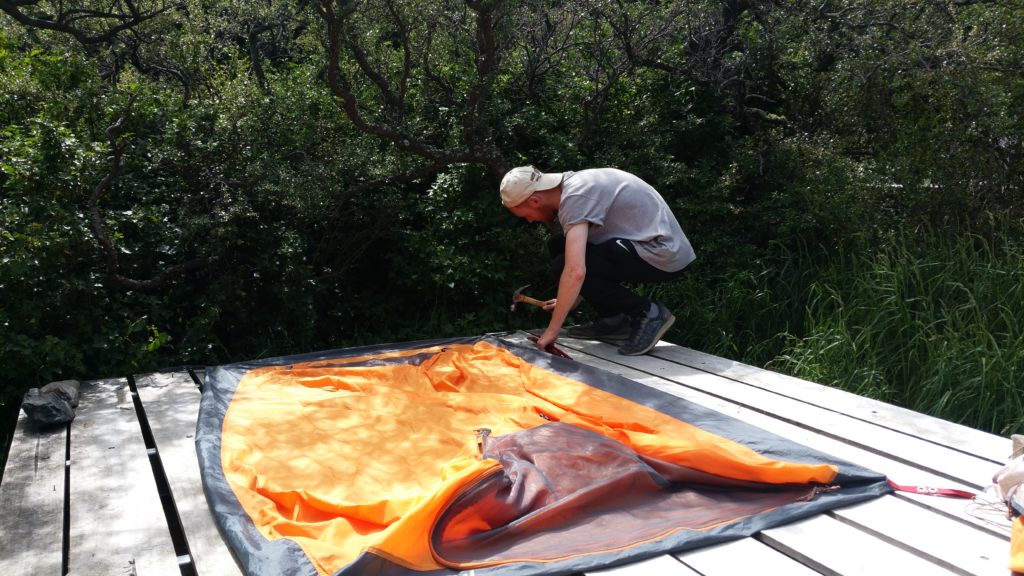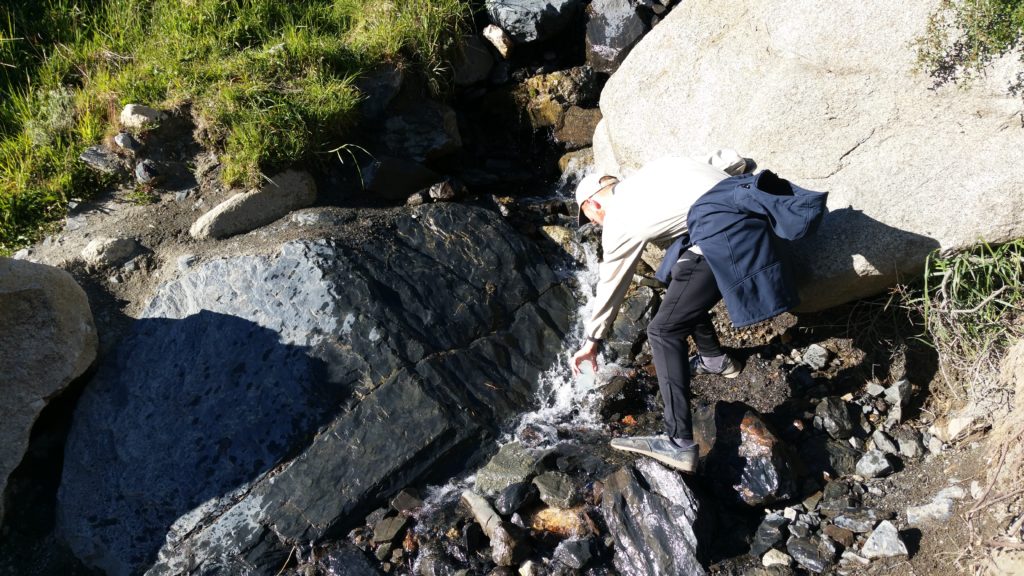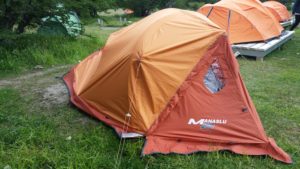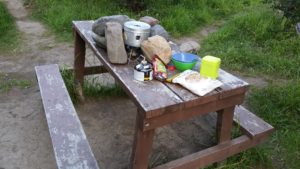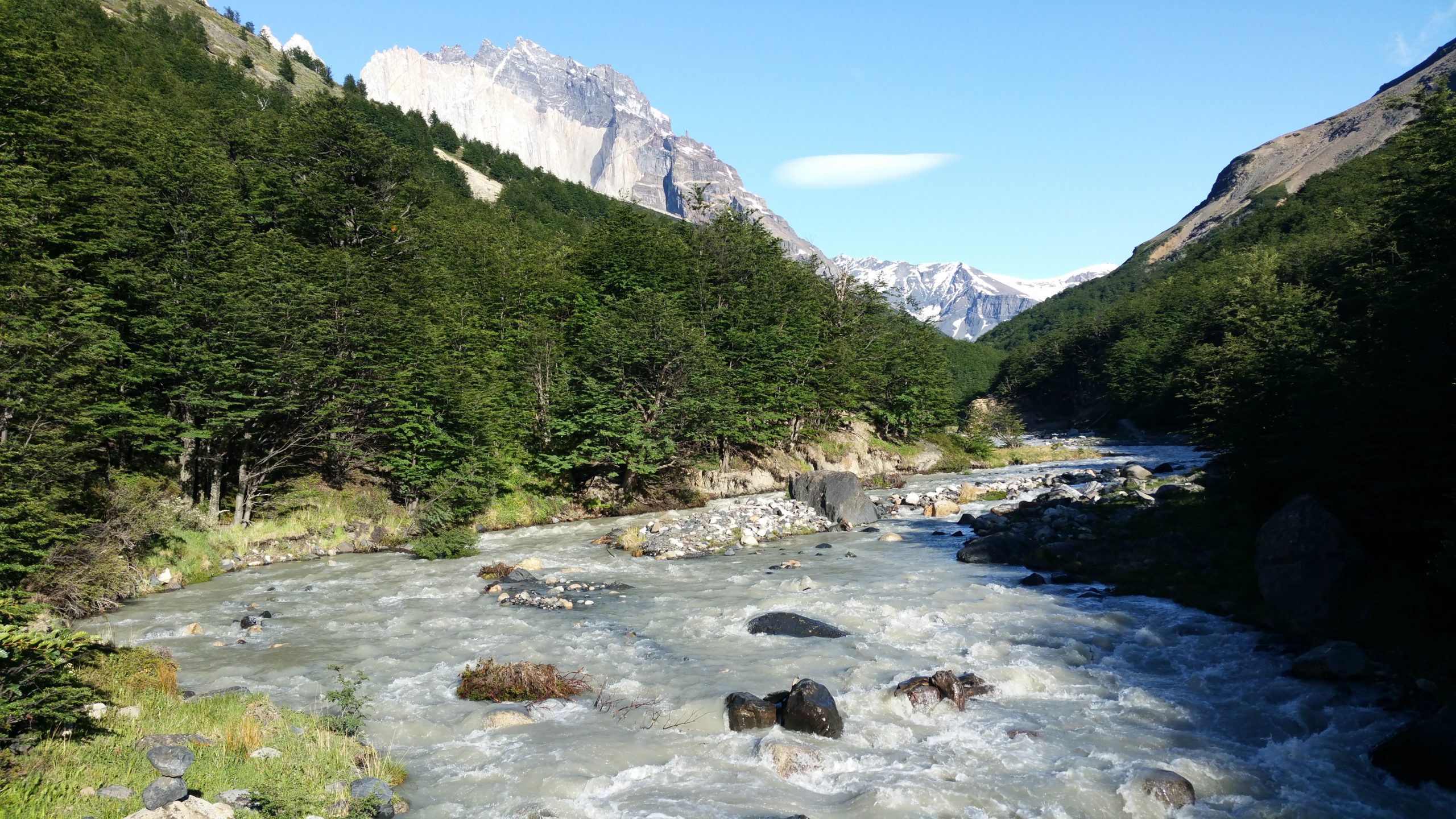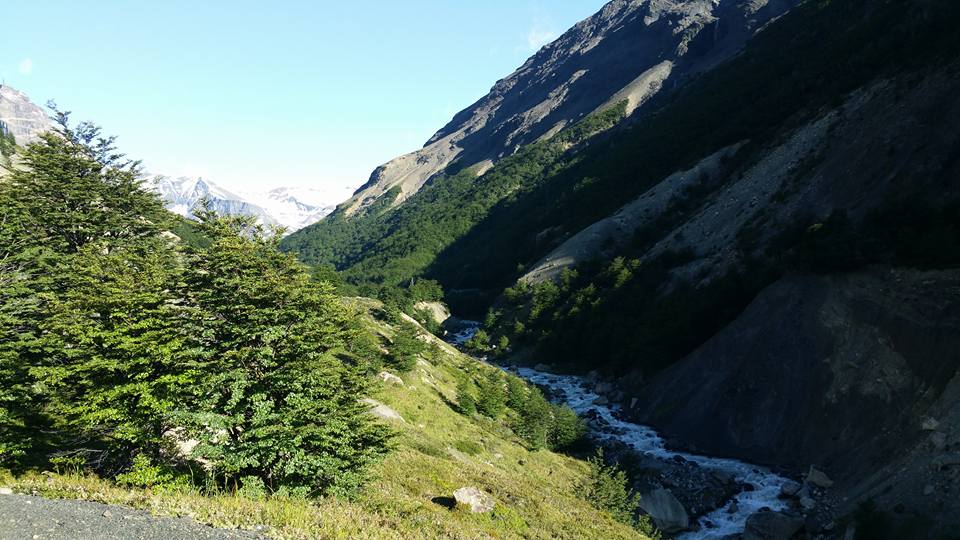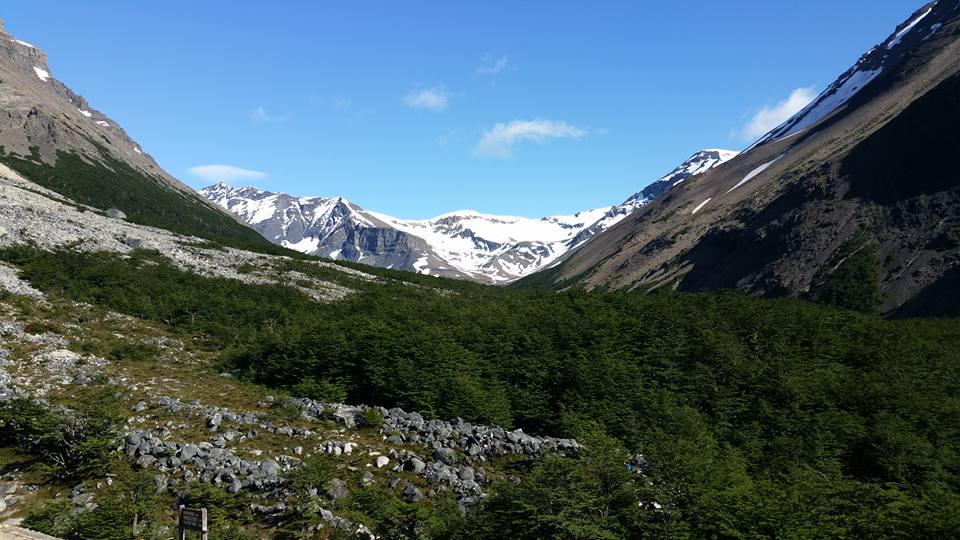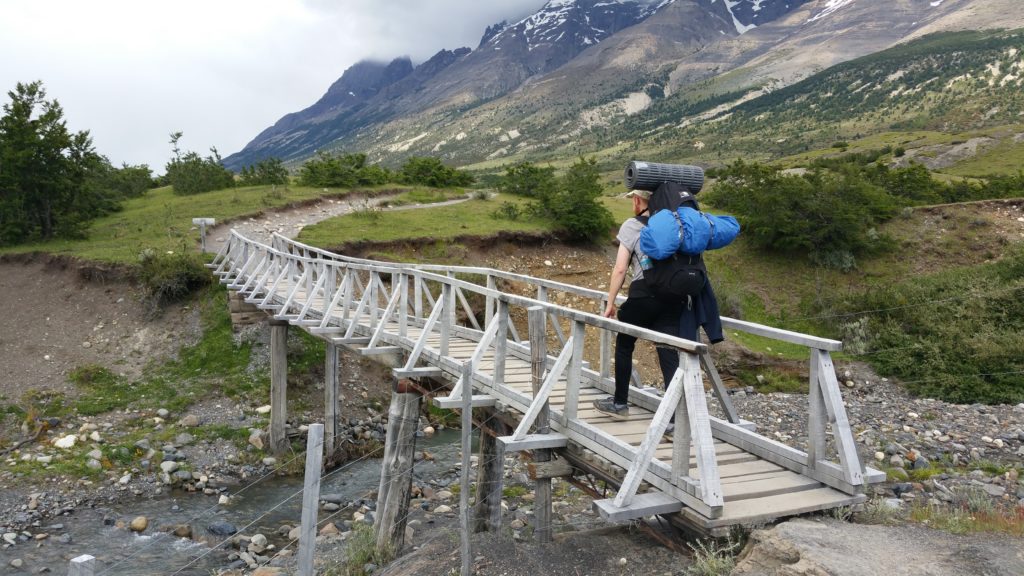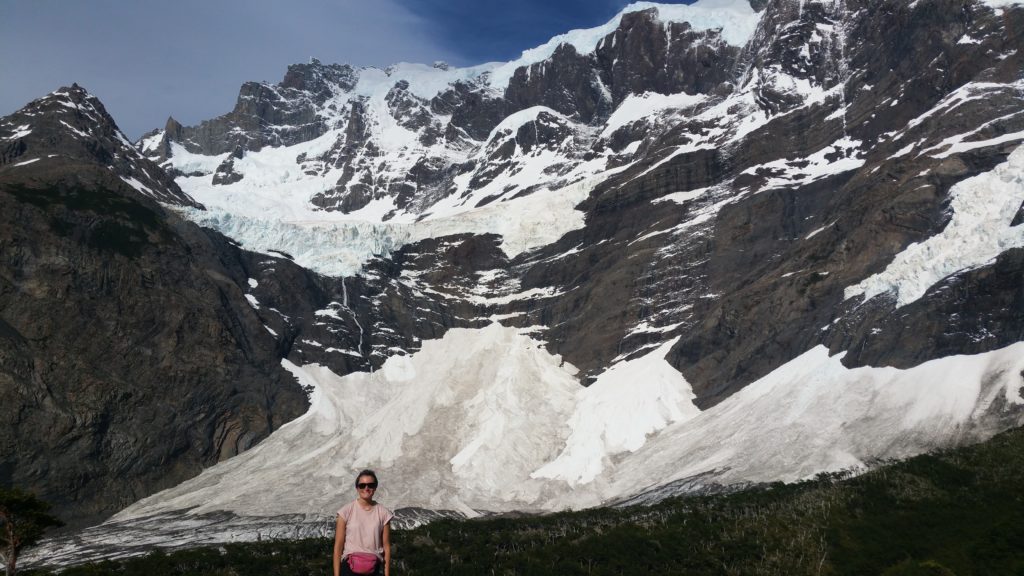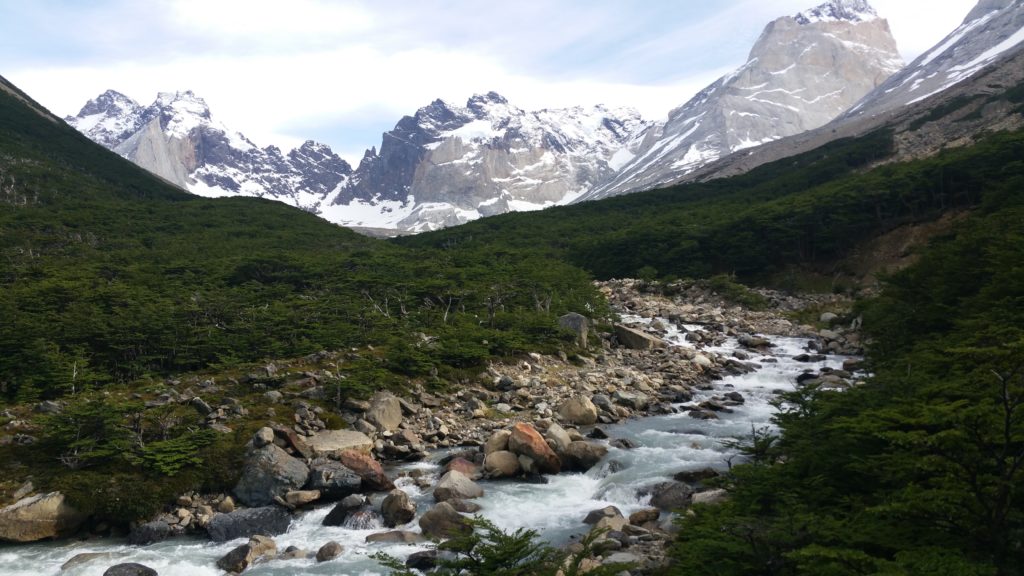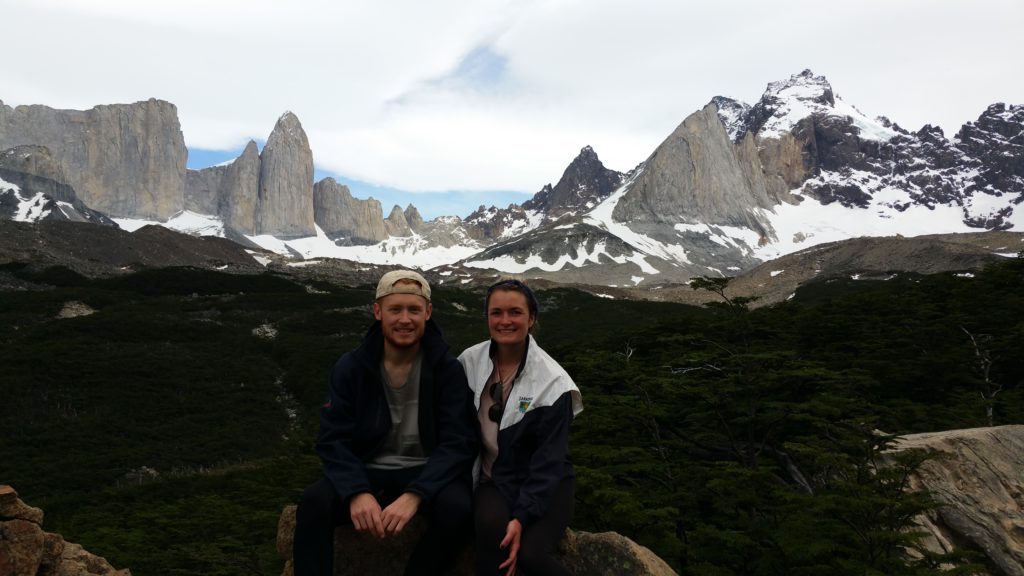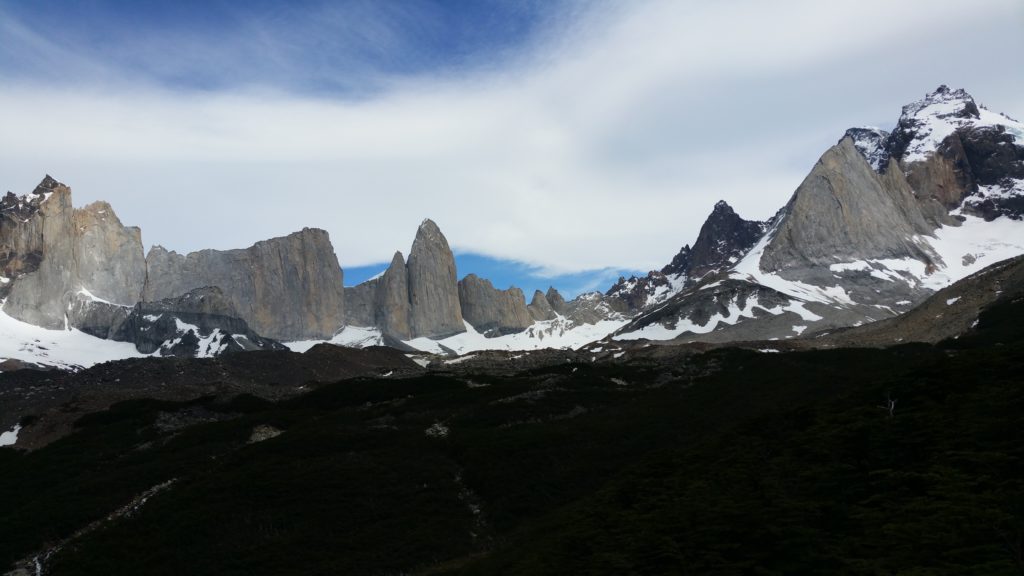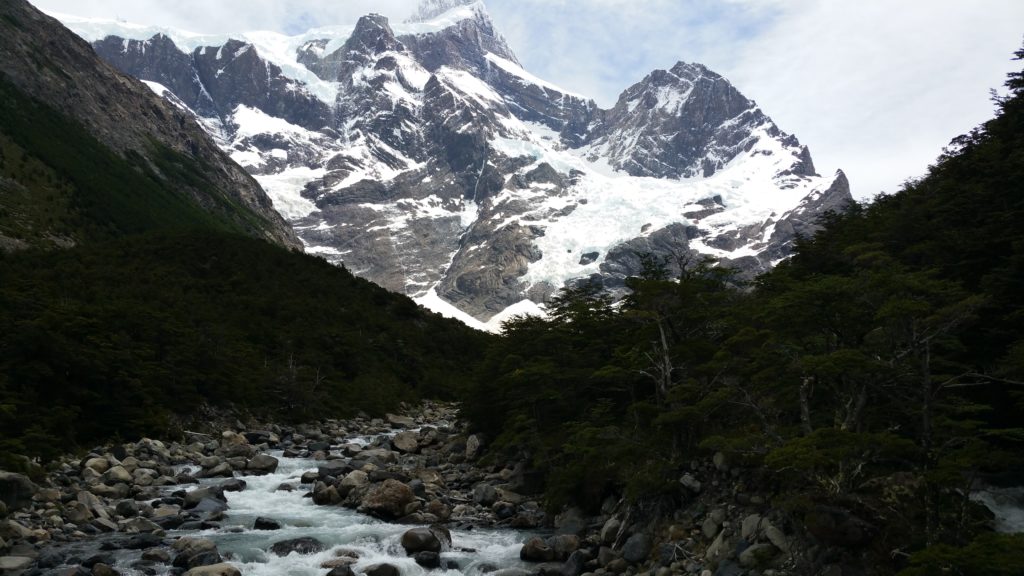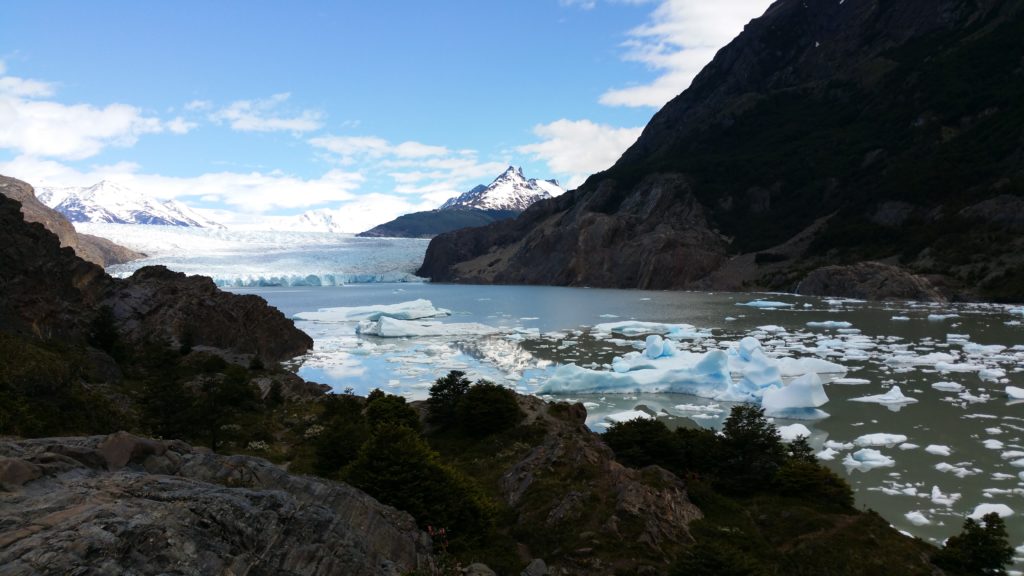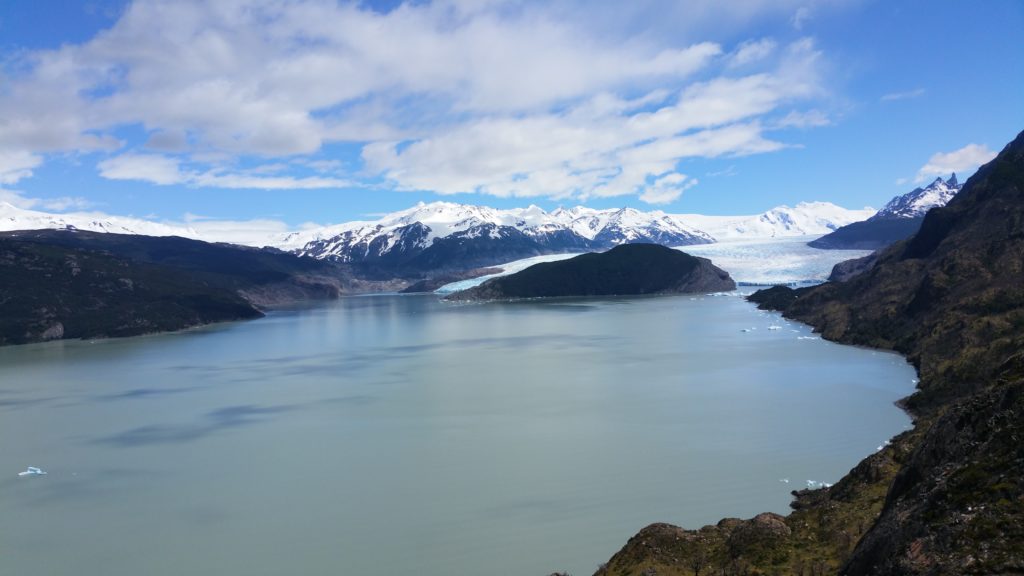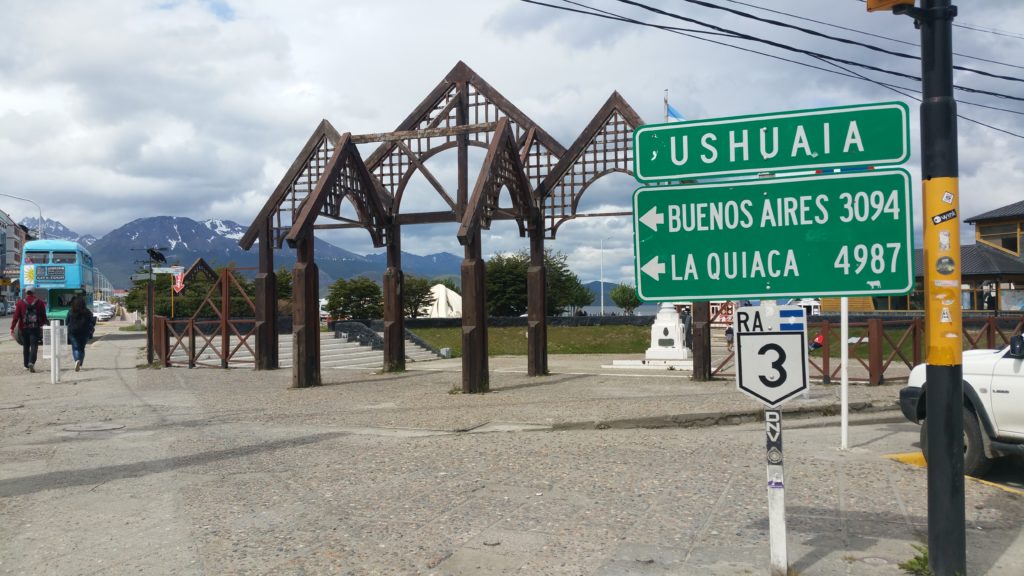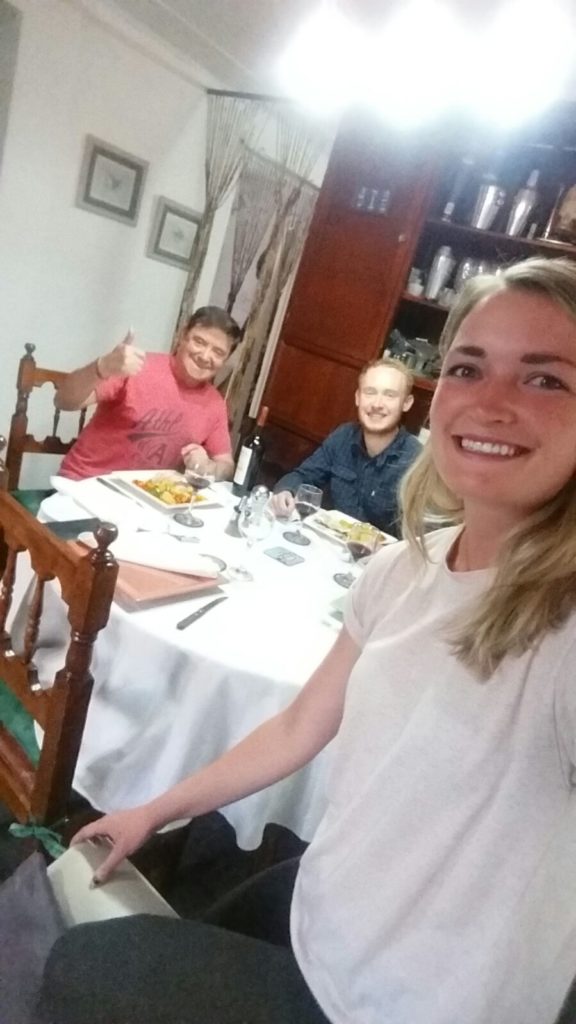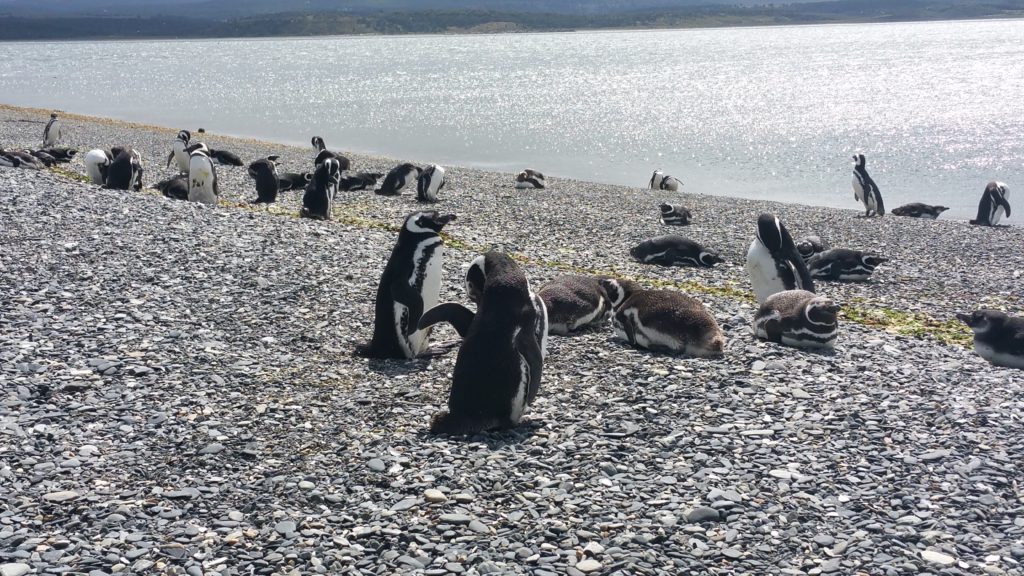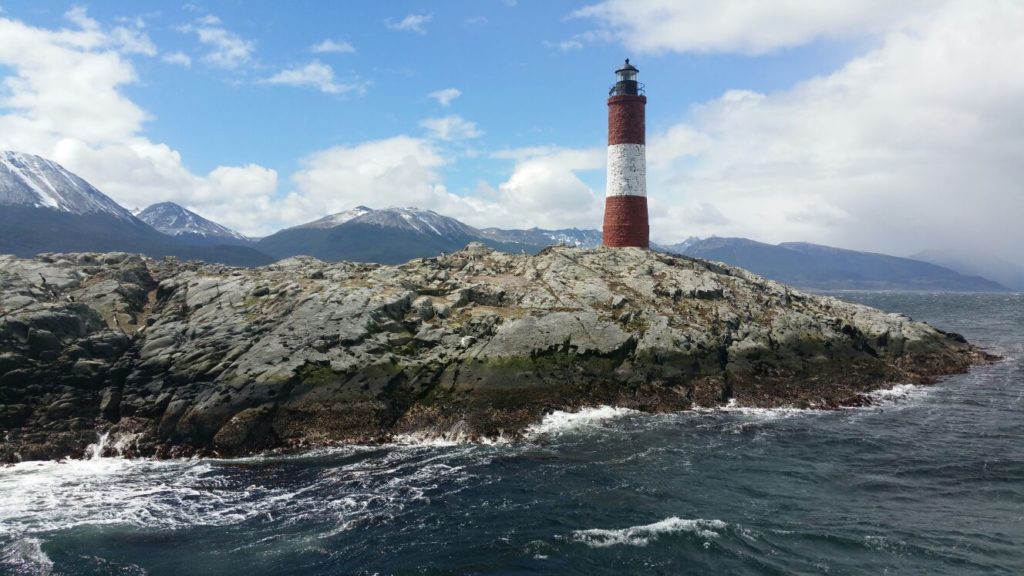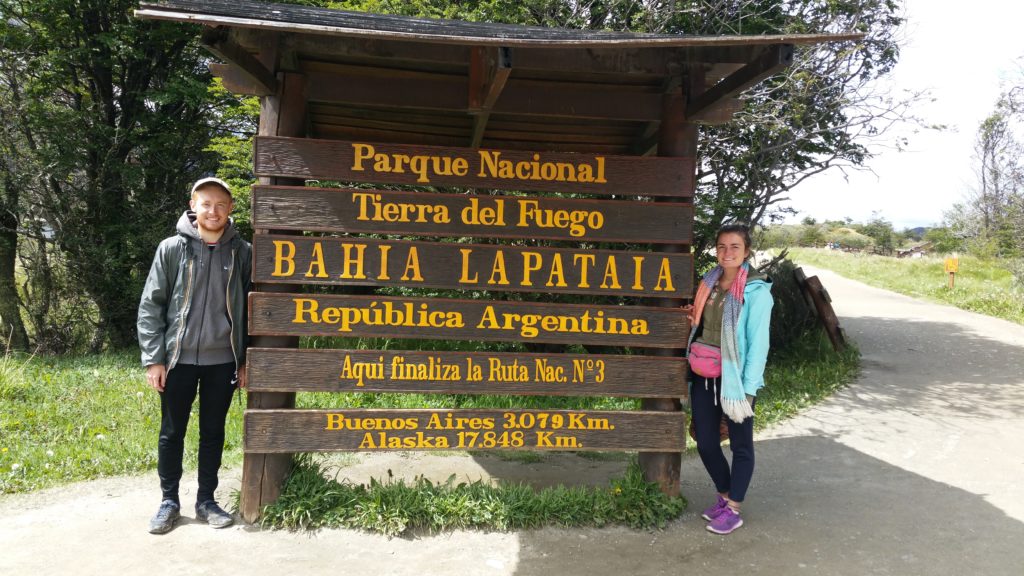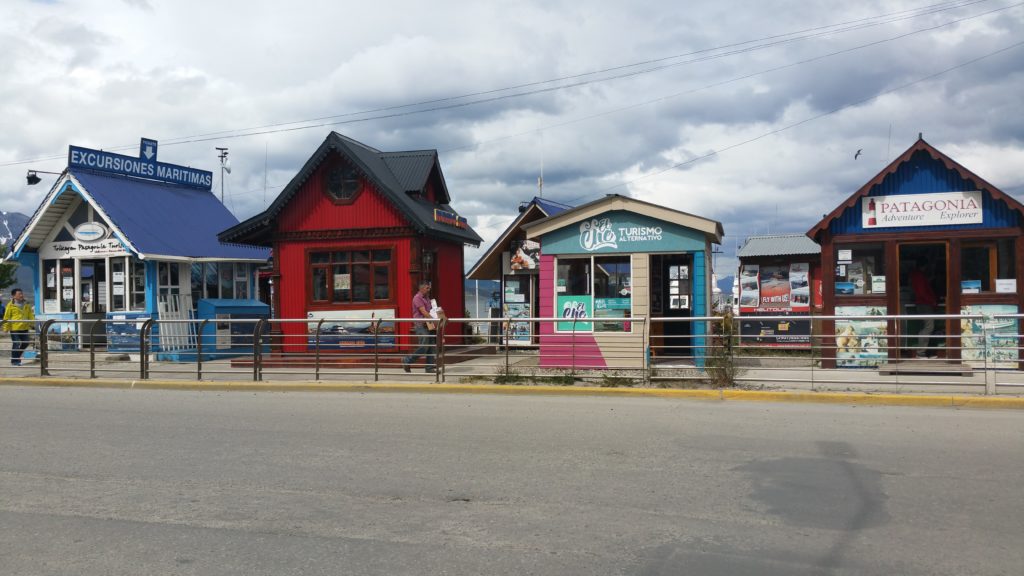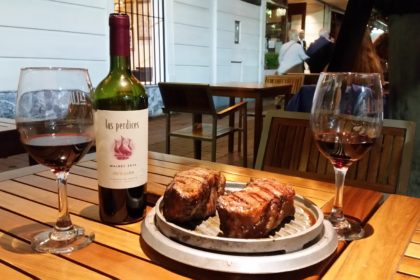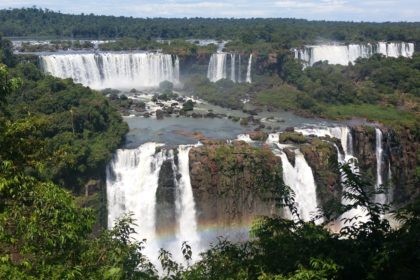
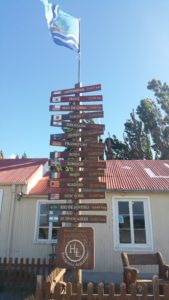 Patagonia is the hiking capital of South America – it deserves its very own post as every view is spectacular and it is a place where you could spend from 1 month to 1 year and still not see everything. The region zig zags in and out of Argentina & Chile and due to Patagonia, we ended up getting 8 stamps on our passports for Argentina alone!
Patagonia is the hiking capital of South America – it deserves its very own post as every view is spectacular and it is a place where you could spend from 1 month to 1 year and still not see everything. The region zig zags in and out of Argentina & Chile and due to Patagonia, we ended up getting 8 stamps on our passports for Argentina alone!
The best time of year to travel around here would be between November and May, with high season being January & February, however as with every place in South America, you are never guaranteed good weather and if things do not go your way you could spend a month here and not see one sight. This risk though makes every view extra special.
My top tip I would give for travelling this region is to take the time beforehand to plan where you want to go and when, as during certain times of the year, some places can get busy and you can find it tough to book for the exact dates you want (this sentence is mainly in regards to Torres del Paine, read on for further details).
El Chalten, Argentina
Our first stop on the mini adventure within our bigger adventure, we first flew to El Calafate from Cordoba and then got a transfer to El Chalten. The transport was very easy to organise and after being in Patagonia for just 2 minutes, you notice how relaxed and easy going everything seems to be.
- Mount Fitz Roy hike – El Chalten
.
This town is very relaxed and we loved it here. All of the hikes start from the town so you can stay anywhere – it is a small place anyway and can walk from one side to the other in about 15/20 minutes. We spent 3 nights here and we completed all the hikes we wanted to do – thought of this as a sort of warm up for the Torres del Paine hiking that was to come.
The two most popular hikes here are Mount Fitz Roy and Cerro Torre. Mount Fitz Roy is a 20km round trip, there is a detour which you can take to see a glacier which then adds on 4km. We opted for the 4km detour and I don’t know if it was tiredness or the fact I wanted to get back to the hostel, but we were not very impressed with the glacier and could’ve done without the extra walking. Cerro Torre is a 18km round trip.
- Mount Fitz Roy – El Chalten
.
For both hikes, we found it was beneficial to wake up at 6am and start the walks; we managed to beat the clouds for Mount Fitz Roy but unfortunately for Cerro Torre they never shifted all day.
- Cerro Torre – El Chalten
- Mount Fitz Roy – El Chalten
- The last kilometre on the hike to Mount Fitz Roy – El Chalten
We woke at 4am on our last morning to climb up to El Mirador De Los Condores for sunrise. This hike is only 1km so it is worth going if the clouds are going to shift in your favour. Sadly for us, the sky was covered in a blanket of cloud and we didn’t get to experience the red glow of the sun reflecting off Mount Fitz Roy. The view over the town was lovely though so it wasn’t a wasted trip.
- View over El Chalten
What kept us motivated on the hiking days was thinking and talking about food (surprise surprise). There are lovely cafes and restaurants in the town to celebrate the thousands of steps walked, albeit they are pricey for South American standards. My favourite treat was dulce de leche waffles from La Wafleria – I would make the trip back just for them!!
- Dulce de Leche waffles – La Wafleria
.
There are more hikes to do in El Chalten and you can also camp if you want to – with our limited amount of time we were happy with what we had done with our time and moved on to our next stop.
- Mount Fitz Roy – El Chalten
El Calafate, Argentina
- Perito Moreno Glacier – El Calafate
.
Another dainty little town, the main event here though is Perito Moreno glacier. It is an amazing glacier that is forever shrinking and growing at the same time (riddle me that). If you’re lucky like we were, you can watch the ice break off and splash into the water below – the sound it makes is like a thunderstorm it is crazy.
- Perito Moreno Glacier – El Calafate
You book a bus ticket for this, either going in the morning or afternoon. When we were told we would spend 5 hours here we thought time would go slowly as there is only one thing to see. We were wrong though and could’ve spent another 5 hours here just admiring its beauty.
If you’re going on to Puerto Natales after here, which is the place you get to Torres del Paine from, make sure to book your bus ticket as soon as you land in El Calafate. We were here in November, which isn’t even high season and we nearly had to hire a car to make the journey as we had left it too late for a bus ticket. Thankfully though with a swift change of plans we managed to make it work and found a ticket for a day later than originally planned.
There is a pub called Mako which serves very tasty burgers! We had planned to cook everyday in El Calafate, but after our bus ticket saga we needed the treat and this was the place for it.
Puerto Natales, Chile
.
We got the bus from El Calafate (6 hours or so) and stopped off at the border for immigration checks and passport stamps. Having been through a few borders, we were becoming relaxed with the whole process and it was more so a pleasant stop off to stretch our legs.
Arriving in Puerto Natales late in the evening, we made a quick trip to the rental shop before closing time. We went to Erratic Rock for all our camping needs, they were very helpful and explained everything we should and shouldn’t bring. Having never done a multiple day hike before, we were worried about carrying our tent with us and how on earth we were going to manage. After half an hour speaking to the guys in the shop though, our worries had disappeared and we could’ve signed up for a longer trek! We picked all our stuff up the next morning and we got to assemble the tent in the shop, just to be extra sure we wouldn’t be stuck.
- Our tent for the ‘W Trek’ – Torres del Paine
They also hold a talk every day at 11am and 3pm to give useful advice and tips for the treks in Torres del Paine. They will answer every question and also it gives you an opportunity to rummage through the ‘free bin’ which may save you on renting some equipment. The camping equipment we rented for a 4 night/5 day trek around Torres del Paine was as follows:
1 tent
2 sleeping bags
2 sleeping mats
1 portable stove
1 gas cylinder
1 cooking pot
2 bowls
2 forks
1 knife
- Dinner time during the ‘W Trek’ – Torres del Paine
Puerto Natales really just is the stopover you make before going to Torres del Paine, however what I actually would go back there for in a heartbeat is for a burger we had. It was the most delicious burger we’ve ever had in our life and that is no exaggeration – my boyfriend was very close to ordering another burger it was that good!! We got it from the restaurant which is linked to the hostel We Are Patagonia. Also a big draw back to Puerto Natales would be to stay in this hostel again, because sleeping in their beds are like sleeping in a cloud!
- The most delicious burger – Hamburguesería La Forastera, Puerto Natales
Torres del Paine, Chile
One of the main reasons people travel down the continent this far is for visiting this amazing national park. There are a number of ways you can see this beauty of nature; day trip from Puerto Natales, trek the O circuit (8 nights/9 days) or trek the W circuit (4 nights/5 days). We trekked the W circuit, so this post is mainly about that however the way to plan any of the trips is more or less the same.
- Map showing the ‘W’ & ‘O’ Treks – Torres del Paine
As I stated above, a top tip I would now give before travelling to Torres del Paine is to plan ahead. We did not know what to expect when we started thinking about going here and of course the time of year we were planning on travelling was leading into the busiest time. As most of the refugios on the trek are only opened for the Spring and Summer months (September to June), that means the whole world only has a chunk of the year to see this wonder. We got extremely lucky as we had known a friend who travelled Patagonia about a month before us, so she gave us useful tips which made our lives much easier and kicked us into gear to get organising.
For what is a simple national park to trek around, it is a nightmare to organise! It still baffles me why that is the case because it should be easier but anyway you forget about that once you step foot in the place. Hopefully through this blog, it will make life a lot easier and who knows maybe you will have some fun planning this trek of a lifetime.
- Setting up our tent at Refugio Los Cuernos – Torres del Paine
There are 7 campsites along the W trail and these are owned by 3 different agencies; Fantastico Sur, Vertice and CONAF. I hope that as the years have passed and the trail has become more popular, that the agencies are better organised to make the planning go smoother than it went for us. What we done was write down the dates we wanted to be at each camp and then either looked on the website for availability or wrote to the agency directly, be it on email or through Facebook, or both.
We trekked the W circuit and we went from East to West. Why is it called the W circuit you may ask? Well not to state the obvious, but that is the shape in which you trek and because of this you can do it from East to West or West to East. Of course I will stick to what I know and say East to West is the best, but either way round you still see the same sights and the trails are similar either way round.
- Drinking from the streams of Torres del Paine
.
A worry we had when we were preparing for the trek was how we were going to carry water around to last us 5 days! However, we survived with just having a 2 litre bottle each as you can drink the water from the streams all around the national park. Just make sure to fill up away from the path and it is the purest water you will probably ever have on a trek.
Last but not least, the W trek is an easy to moderate trek and you do not need to have lots of hiking experience before embarking on it. Also you can take as little or as long as you want to complete it, doing it in 4 nights/5 days is not the only way to do it. As long as you like walking and love seeing amazing sights, then you can embark on this trail with a pair of trainers and a backpack. It is as simple as that!
Below is a summary of our 5 days, to give you a taste of the distances walked each day and the sights we seen:
Day 1:
Got the afternoon bus from Puerto Natales, which took us to the entrance of the National Park. Here, we watched a video which was shown to us by the park rangers and we signed the obligatory paperwork after showing evidence that we had campsites booked for each night of our trek (due to the increasing popularity of Torres del Paine, it is now mandatory to have campsites booked in advance before beginning any trek).
We got another transfer to our first campsite, Camp Las Torres. After a quick check in, we were told we could set up our tent at any of the free spots. Within half an hour we had our tent built and were exploring the rest of the grounds. At each campsite, there are refugios where you can buy meals and drinks. Of course, these are very expensive so we had packed pasta for each of our dinners but at least the option is there if you really wanted.
- Our tent for the ‘W Trek’ – Torres del Paine
- Dinner time during the ‘W Trek’ – Torres del Paine
My favourite thing about refugios were that they were warm and you could chill in them for as long as you wanted. Also, the staff could charge your phone up free of charge!
Day 2:
We had toyed with the idea of getting up at 2am to trek to the Towers for sunrise – however, after talking to the staff at Erratic Rock rental shop who described it as trying to walk through a minefield blindfolded, we opted against that idea.
- Day 2 of the ‘W Trek’ – Torres del Paine
Instead, we woke at daylight (5:30am) and started on the 3 hour trek to the main sight, The Towers. A great thing about Torres del Paine is that you do not have to carry your luggage for the toughest treks, all you need to bring is water and snacks for the walks.
- Hike to ‘The Towers’ – Torres del Paine
On the ascent up we were glad to be doing it in daylight as there were a lot of rocks to scramble over. Also, what made it better was passing people who had been up for sunrise and the one word they used to describe the experience was ‘cold’. As weather is not guaranteed in Patagonia, even if you wake in the middle of the night for something spectacular, the clouds could spoil everything.
To our delight, the sky was clear when we reached the top and we had an amazing sight before our eyes! We stayed up there for as long as our freezing bodies could allow us, then we made our way back down to camp.
- The Towers – Torres del Paine
We stayed a 2nd night at Camp Torres.
Total distance: 19km
Day 3:
- Hiking the ‘W trek’ – Torres del Paine
.
The hike to Los Cuernos was stunning, with the view of Lago Nordemskjold the whole way. As the clouds parted and the sun shone on the lake, it was an amazing turquoise colour and we could’ve stared at it all day.
- Looking out at Lake Nordenskjöld – Torres del Paine
- Lake Nordenskjöld – Torres del Paine
.
Arriving at Refugio Los Cuernos, we had thought we were getting a bed to sleep in considering the price we had paid. To our surprise, we were lead to a wooden platform and handed a hammer and nails to set up our tent – in hindsight I don’t know why we were expecting the glamour of a bed, we were on a camping trip! Happy with our spot, we enjoyed our evening as we had a 3 course meal prepared for us.
- Setting up our tent at Los Cuernos – Torres del Paine
Total distance: 11km
Day 4:
The biggest day of hiking was ahead of us and we woke up before breakfast time so we could get going. Thankfully, as we had explained in advance that we would be leaving early, the staff had prepared our breakfast and packed lunch which was appreciated.
- Day 4 of the ‘W Trek’ – Torres del Paine
- Hiking to Britanico Lookout – Torres del Paine
.
We got to Camp Italiano in record time, left our bags there and began the hike to the Britanico lookout. As we had got there earlier than planned, we decided to go the full way to the end of the lookout trail. This trail has a closing time of 4pm (I think) as they do not want hikers stuck out there when it gets dark, which is totally understandable.
- Britanico Lookout – Torres del Paine
We got back and picked up our luggage again and headed to our final camp, Camp Paine Grande. This walk from Camp Italiano was boring enough and having had a very early start, we couldn’t wait to see the tents in Paine Grande.
- Britanico Lookout hike – Torres del Paine
Arriving to Paine Grande before our planned time, we got to relax for a bit before setting up our tent for the final time. When we braved it, the wind was soo strong and I felt like we could’ve been blown away like a kite at any second. Luckily no one was lifted in the air and our tent survived the gusts of wind, which made for a lovely photo of all the tents set up with a stunning background.
- The setup at Paine Grande camp – Torres del Paine
.
Total distance: 24km
Day 5:
The final day of hiking was upon us, we had more or less survived the W trek and we had booked the Catamaran to take us back to the bus for the afternoon. However, Torres del Paine never quits with the surprises, we had found out that the Catamaran had broken due to the high winds and they were unsure if it would run today. If it wasn’t running, that meant we would have an extra hike of around 10km to make to get to the bus, all before the bus departure time of 7pm. We thought happy thoughts though and prayed the Catamaran would be fixed for the afternoon.
- Glacier Grey – Torres del Paine
.
Nevertheless, we hiked up to Glacier Grey to enjoy the final sight Torres del Paine had in store for us. Having already visited El Perito Moreno glacier (in my opinion the world’s best), we were slightly disappointed with Glacier Grey. However, we still enjoyed the hike and it was worth it to see it in its glory. We also walked back to Paine Grande camp with a spring in our step as we had conquered the W trek.
- Glacier Grey – Torres del Paine
There is Grey Camp which is about 1km from Glacier Grey. A tip I would give if you are doing the W trek would be to stay in Paine Grande camp instead of Glacier Grey. No matter which direction you trek the W trail, you will always pass Paine Grande camp en route to Glacier Grey and I think it is better to do that hike without all your luggage on your back.
- Big smiles after finishing the 4 night/5 day ‘W Trek’ – Torres del Paine
.
Thankfully luck went our way and the Catamaran was up and running for our afternoon trip. We got that to the bus which then brought us back to Puerto Natales. We were 2 very happy passengers having just had the most spectacular 5 days!!
- View from the Catamaran – Torres del Paine
.
Total distance: 24km
Overall distance covered in 4 nights/5 days: 78km. Worth it? OF COURSE.
Punta Arenas, Chile
We stayed one night in Punta Arenas for the main purpose of breaking up the journey from Puerto Natales to Ushuaia. We arrived late afternoon one day and left in the morning the next, so we did not spend time here to fully know if it is worth going to or not.
I noticed it was a small town, with not a lot going on. Talking to our Air BnB host, he told us that there are trips you can go on here to see penguins, which would be nice to do. We already had a trip to see penguins planned in Ushuaia, so we were happy enough with using this town as a stopover.
There is an airport here, so it is a good place to fly into if you are flying from a Chilean city to get to Torres del Paine or Ushuaia.
Ushuaia, Argentina
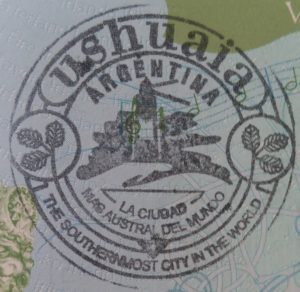 The last stop on our tour of Patagonia, this time round. We loved Ushuaia; the town at the end of the world and I loved how it praised itself as being the southernmost town with the southernmost everything!
The last stop on our tour of Patagonia, this time round. We loved Ushuaia; the town at the end of the world and I loved how it praised itself as being the southernmost town with the southernmost everything!
.
We got a 15 hr bus from Punta Arenas to get here, it didn’t end up being this long as they had overestimated the time it would take us to get through border control. Like everything in Patagonia, the border control was pretty relaxed and we got another stamp out of Chile and into Argentina. This was the final stretch of the zig zag through Chile and Argentina.
We loved all of our time spent here (3 full days). We stayed with the most lovely man we found through Air BnB. We communicated through google translate as we couldn’t speak each other’s language, but that didn’t stop us getting to know each other!
He had breakfast made for us every morning and we even had a dinner together for our last meal before we flew up to Buenos Aires. We will certainly be back to Ushuaia, even if it is just to see this kind man.
- Dinner with our lovely Air BnB host – Ushuaia
We walked around all the shops on the main street and visited the Maritime Museum one day. It is an interesting museum but get ready for a lot of reading when you visit it (a big like this blog post!). We couldn’t resist going into the different agencies offering tours to Antarctica, we couldn’t afford it on this trip but it is on the list for definite!!
We booked onto a tour of the Martillo penguin island with Piratour. This is the only company which you are allowed to walk on the island with the penguins and it is worth every cent!
- Martillo Penguin Island – Ushuaia
They are very respectful of the penguins and do not want to scare them away from their habitat, so we had to keep our distance and respect their privacy. However, penguins couldn’t be stopped from coming close to us and it was a great experience seeing them in their natural environment without a care in the world.
- Penguins in their natural habitat – Martillo Island, Ushuaia
We also sailed on the Beagle Channel and went to the southernmost lighthouse in the world and see a colony of sea lions. This was a great day, even if the Beagle Channel did prove to be a bumpy ride.
- The lighthouse at the end of the world – Ushuaia
Ushuaia is home to Tierra del Fuego National Park. We spent a day walking around here, I don’t know if we had enough of national parks after visiting Torres del Paine but we did not really find this national park that amazing. Maybe we would have enjoyed it more if we hadn’t already seen the greatest sights of Patagonia, that I will never know and will just have to speculate. The bus ticket to this park is also quite expensive, considering it is not that far away from the town centre.
Of course with being in the southernmost point in the world, comes the southernmost Irish pub in the world; Dublin Irish pub. Being Irish and proud, I couldn’t come all this way and not make a visit there!
We enjoyed drinking beagle beer and there was the added novelty when the pitcher was shaped like a penguin. After tasting that, head to BarDPizzas for dinner, especially if you’re in Ushuaia on a Monday as it has 50% food then.
- Drinking Beagle Beer – Ushuaia
- The streets of Ushuaia
